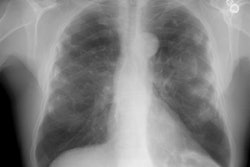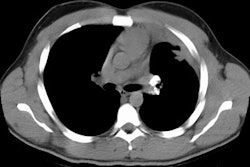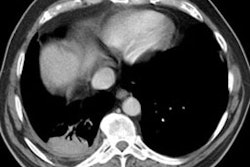Radiographics 2001 Nov-Dec;21(6):1371-91
Imaging of occupational lung disease.
Kim KI, Kim CW, Lee MK, Lee KS, Park CK, Choi SJ, Kim JG.
Occupational lung disease comprises a wide variety of disorders caused by the
inhalation or ingestion of dust particles or noxious chemicals. These disorders
include pneumoconiosis, asbestos-related pleural and parenchymal disease,
chemical pneumonitis, occupational infection, hypersensitivity pneumonitis, and
organic dust toxic syndrome. Most of these disorders produce diffuse lung
disease. Although many of the disorders can be detected at chest radiography,
high-resolution computed tomography (CT) has been shown to be superior to chest
radiography in depicting parenchymal, airway, and pleural abnormalities. Some
occupational lung diseases have characteristic radiologic features suggesting
the correct diagnosis, whereas in others, a combination of clinical features,
related occupational history, radiologic findings, and literature supporting an
association between the exposure and the disease process is required for
diagnosis. With advances in chest radiology, including high-resolution CT,
radiologists play a key role in the clinical evaluation of occupational lung
diseases and should continue their involvement in the diagnosis and treatment of
these diseases.



